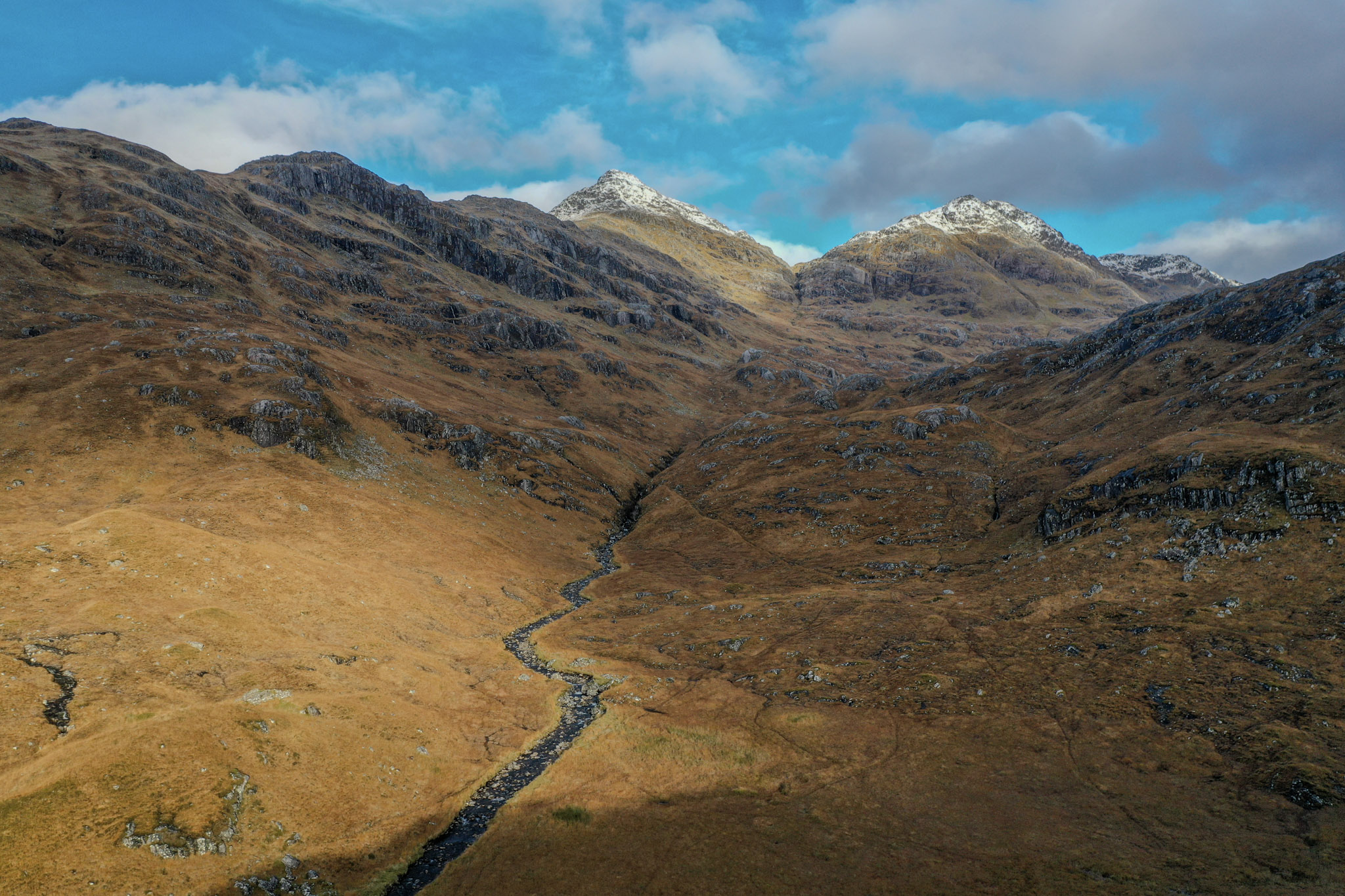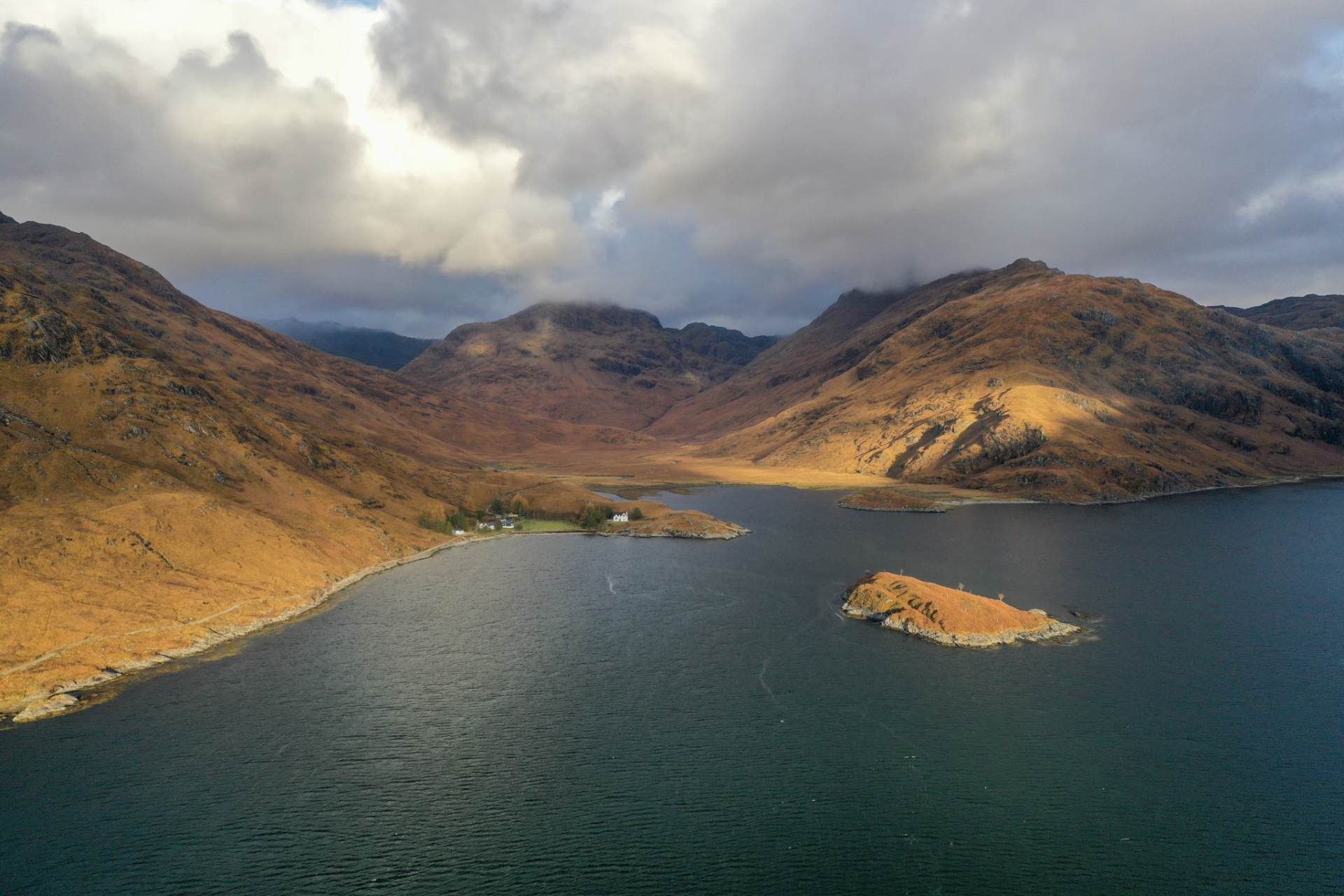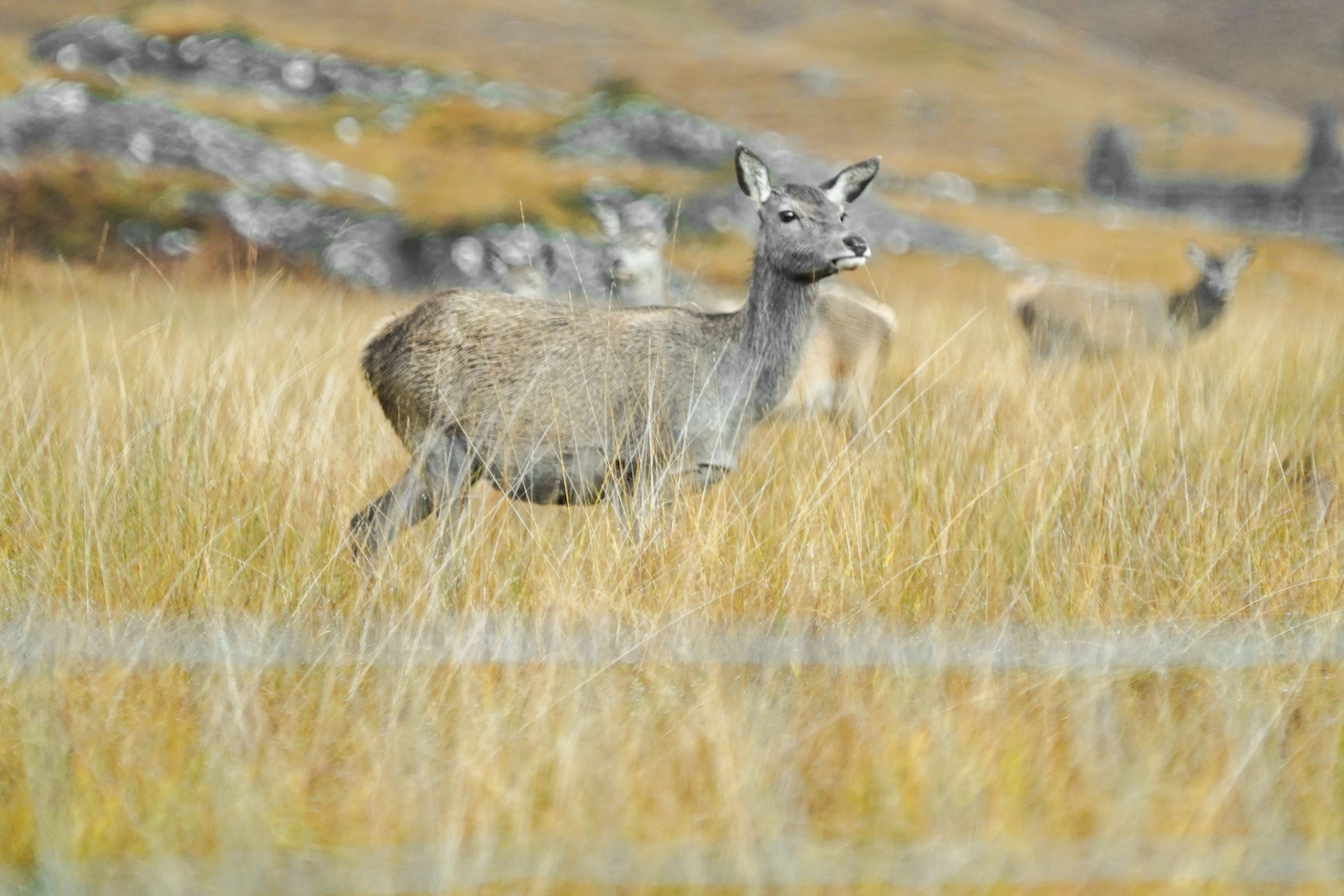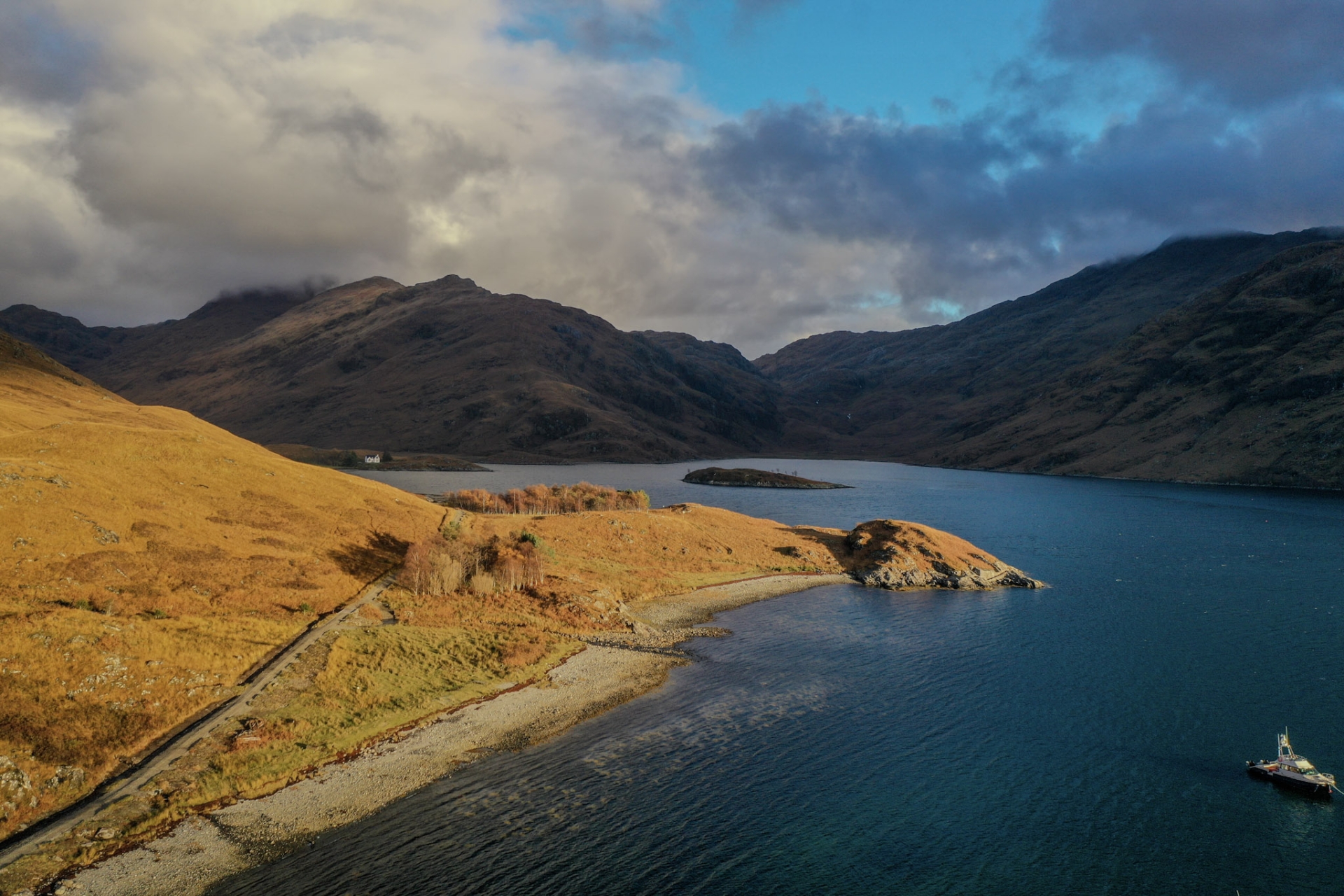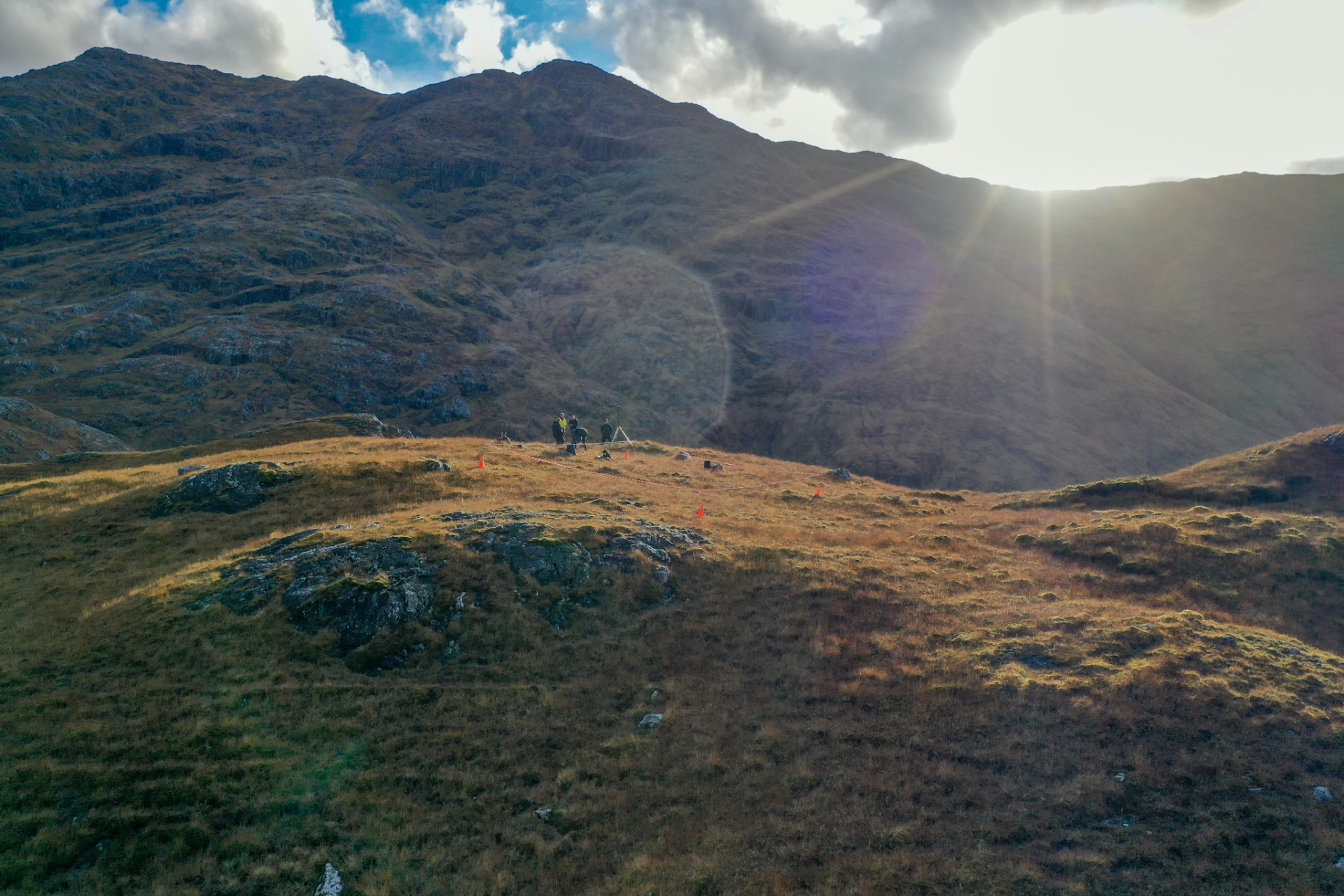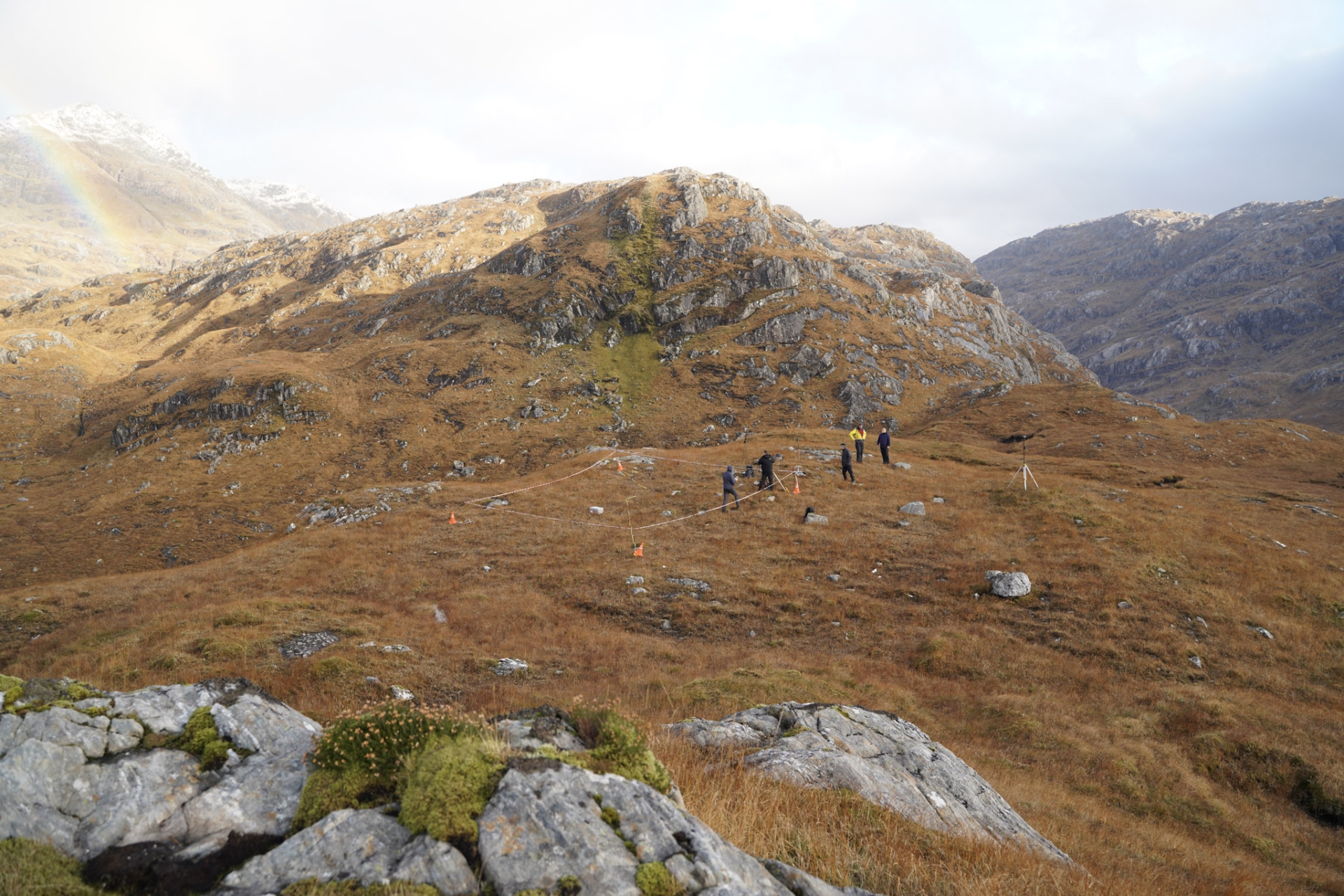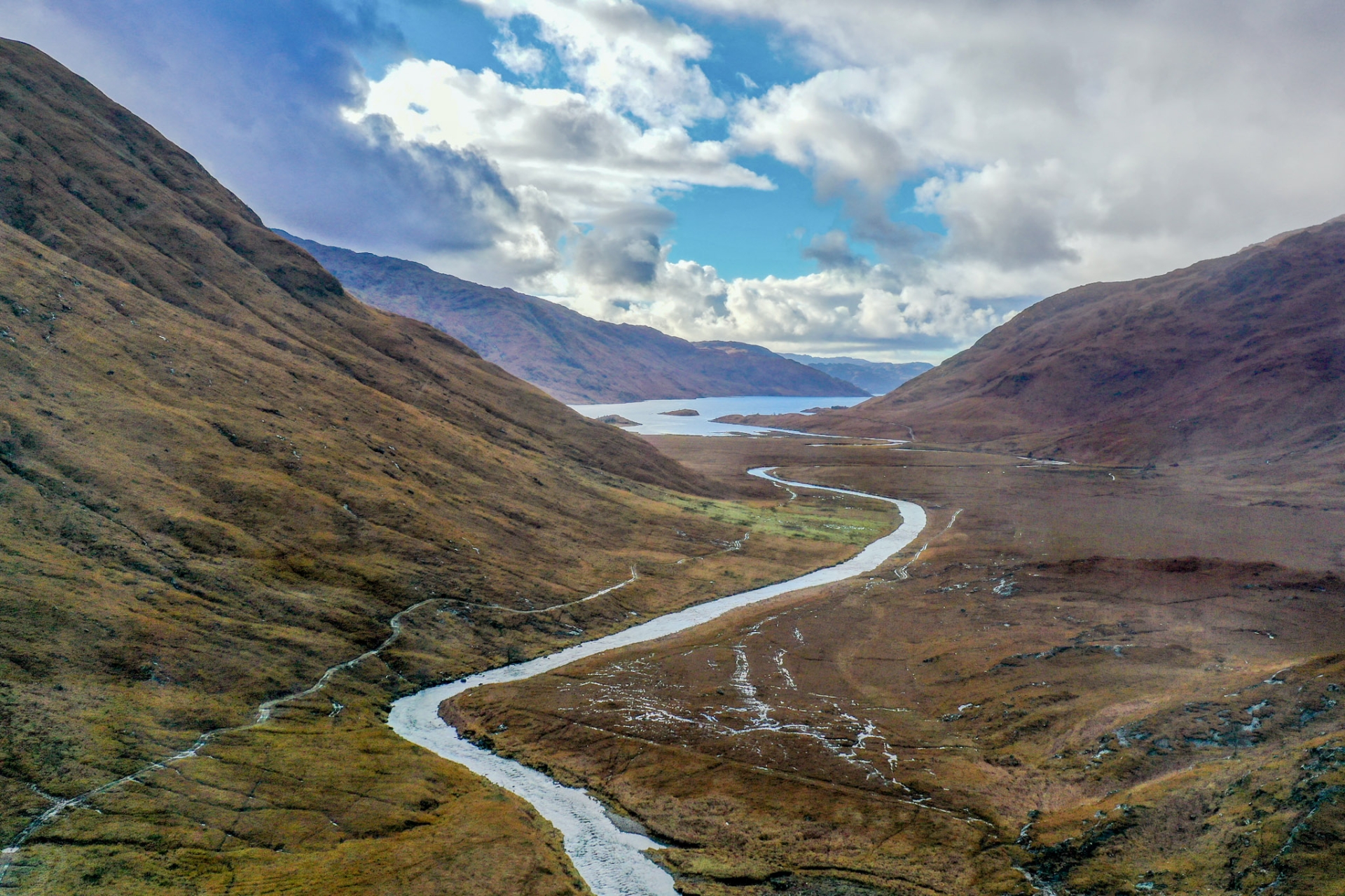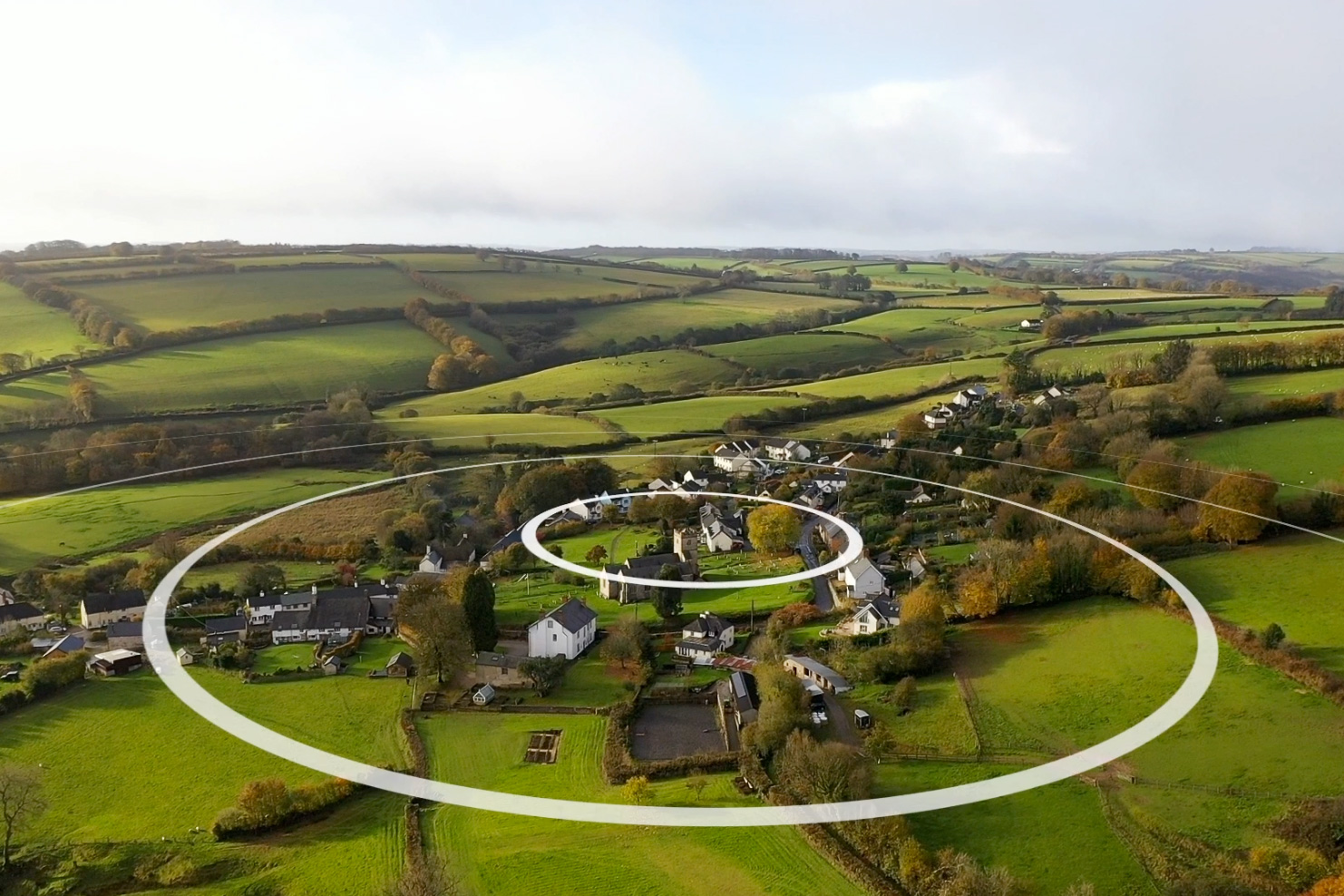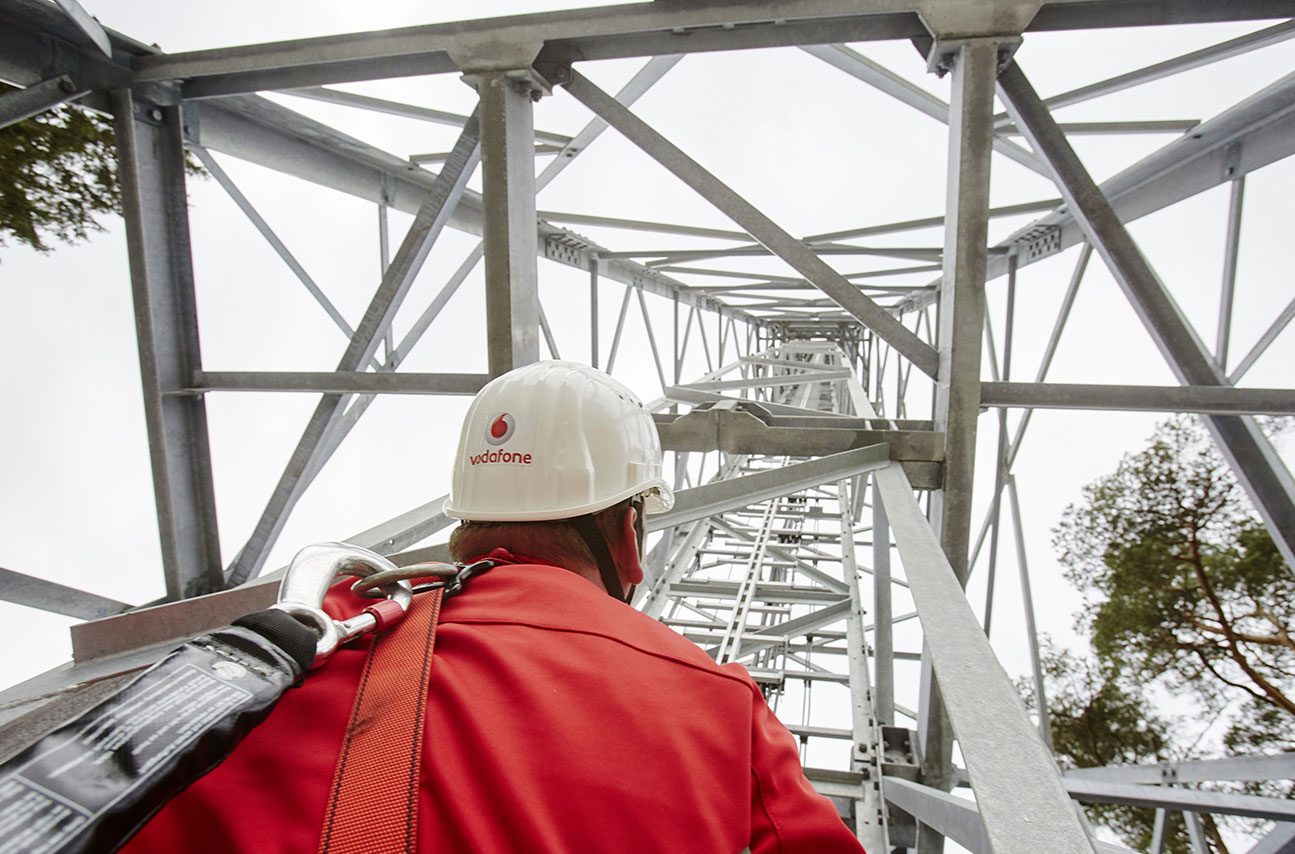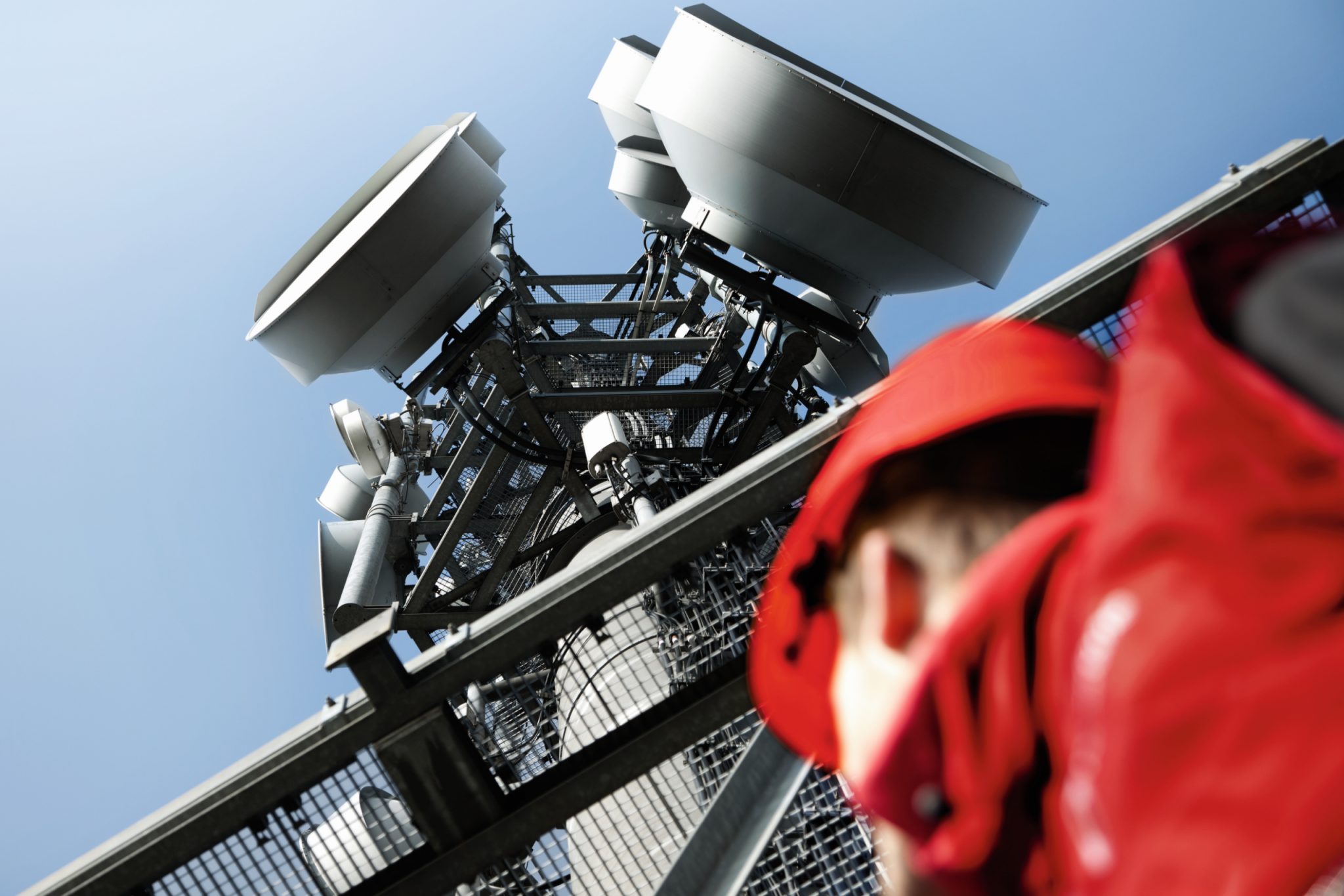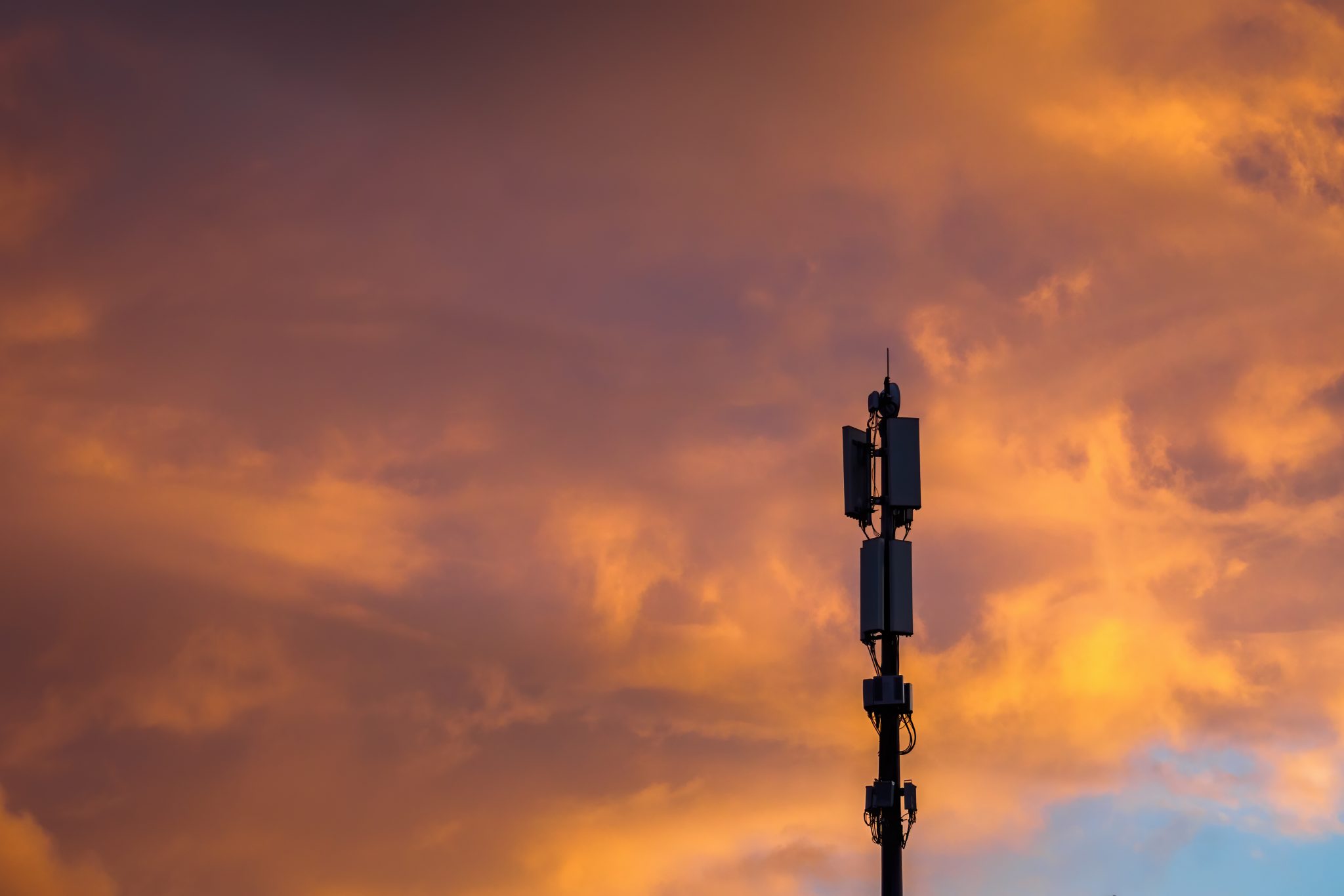Improving 4G signal as part of the Shared Rural Network isn't easy, as Vodafone UK News followed the muddy footsteps of engineers and network specialists.
Placing a new mobile mast is never a simple task. It can take months – even years – of planning and work. From searching for a suitable location to negotiating with landlords and engaging with local planning departments. Then there’s the small matter of ensuring there’s an energy supply and the backhaul connection needed for the mast to connect to the rest of the Vodafone network and the wider internet. All of this needs to be done before construction can even begin.
However, if that potential mast happens to be on or near a Scottish mountain (or munro in hiking parlance), then it comes with additional challenges. Just before Christmas 2023, a team of Vodafone Engineers and Network Specialists (and one plucky cameraman) donned their thermals and hiking boots to visit potential future mast sites located across western Scotland.
A basic guide to Vodafone UK’s network
Vodafone UK's high-speed network is state-of-the-art, the result of billions in investment over the last five years. But how do all the parts fit together?
Ain’t no mountain high enough
After leaving their day one base of Mallaig, the team started with a visit to Camusrory near Loch Nevis where a mast is in early stage of planning. This involved a two-and-a-half-hour boat journey and then a 12km walk to the potential site, where the team assessed its suitability.
Day two started with a journey from Mallaig Harbour across Loch Morar, the deepest in the UK. To reach another future planned site at Loch Beoraid, the Vodafone team then had to hike 6km along the shore, then up a neighbouring hill for several hours through uneven ground littered with boulders and bogs. Hailstones and high-speed winds forced the team to take shelter until the dangerous weather had passed.
The final day was the most challenging with a 19km hike up to a plateau approximately 500m below the munro peak of Garbh Chioch Mhòr. Here, the team surveyed the proposed mast area, checking the ground conditions and depth of rock. As this location makes it impossible to use fibre optic cabling for the backhaul connection, a line-of-sight wireless link to another mast would be required. To check that such wireless backhaul could work, they deployed drones to check the site’s exact GPS location.
Shared Rural Network
The planned sites will bring much needed 4G connectivity to areas so remote that the nearest doctor is approximately two-to-three hours away. For Alex Viner, videographer and camera operator, the visit was an eyeopener: “Physically, that was the toughest three days I’ve ever had. With the team I got to see the full picture on the amount of work that goes into installing a mast in these types of locations.
“Planning how to build it, supply power to it, connect it to our core network and how they will maintain it is one thing, there’s also reducing the environmental impact. Like using the natural environment and paint to help conceal it. I’m now completely in awe of the team.”
For Michael Kershaw, who works in Vodafone UK’s Network Planning team, this was a normal day in the office. “We face challenges every time we go out into these remote locations. Fortunately, the weather was kind for the majority of our visit. However, it is very easy to get an injury due to the ground conditions and the weather affecting visibility. We are experienced hikers and navigators. But not everyone is, so providing coverage in these locations gives peace of mind to everyone visiting this beautiful location, should anything out of the ordinary happen.”
Mobile phone masts: Everything you need to know
Finding suitable sites, securing planning permission, and building mobile phone masts is more of a tricky and time-consuming business than you may have realised. Our Q&A explains why.
The improvements are part of the wider Shared Rural Network (SRN) programme, a £1bn joint initiative between mobile network operators, Ofcom and UK Government which aims to provide increased 4G coverage in rural areas. The planned Scottish sites surveyed by Kershaw and his team will join 155 others already live with Vodafone 4G, as part of the company’s commitment to the Shared Rural Network.
Vodafone’s wider ongoing rural network improvements include the introduction of innovative new technology such as OpenRAN and switching off of its 3G network by early 2024 in order to replace it with strengthened 4G and 5G services.
As for the network team, with more masts planned as part of the wider SRN programme, the hiking boots are already being cleaned and waxed for more survey trips.
Stay up-to-date with the latest news from Vodafone by following us on Twitter and signing up for News Centre website notifications.
